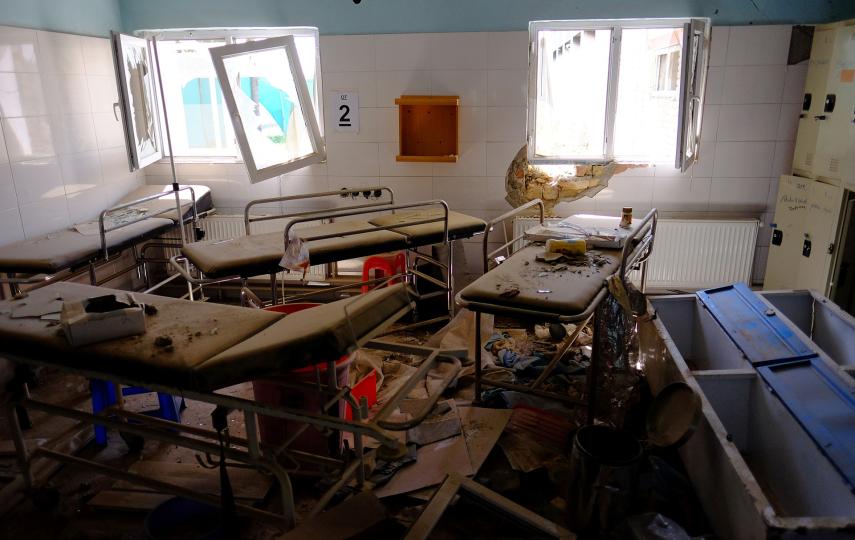The prospects of direct talks between Afghanistan’s government and the Taliban have raised cautious hopes after decades of conflict. But if there is to be a durable peace, then Afghanistan’s CIA-supported paramilitary forces must also be disbanded.
In February, the United States and the Taliban inked an agreement calling for US forces to withdraw, and for the Taliban not to support international terrorism. This treaty paves the way for the Taliban and the Afghan government to negotiate a comprehensive peace settlement, though this process has stalled for weeks.
Afghanistan has been cursed with foreign-financed militias, and the units supported and trained by the US Central Intelligence Agency are of special significance. The US-Taliban agreement does not include the activities of the CIA in Afghanistan. But the future of these militias – and their involvement in conflict, targeted killings, and political violence – cannot be left out of the conversation.
The agency has a long, torrid history in Afghanistan. As outlined in a recent report for the Costs of War Project, which researches and analyses the toll of post-9/11 wars, the CIA played a key role in the 1980s in American efforts to assist Afghan rebels known as mujahideen, who invoked the duty of holy warriors to fight Soviet forces and the Afghan communist government. Assistance included organising a mule-and-truck trade in arms and opium.
The CIA took a lower profile in the country during the 1990s when the mujahideen and the Taliban fought for power, but a well-established local infrastructure enabled the agency to rapidly spring into action after the September 11, 2001 attacks. Operatives equipped with mobile phones and large bundles of dollar bills entered the country on a mission to mobilise Afghan militias.
“Afghanistan has been cursed with foreign-financed militias, and the units supported and trained by the US Central Intelligence Agency are of special significance.”
Since then, the CIA has financed, trained, and worked closely with militias and special forces of Afghanistan’s intelligence agency – the National Directorate of Security, or NDS. These units function like death squads in secretive night raids often labelled simply as search operations.
The United Nations mission in Afghanistan, UNAMA, found at least 278 civilians were killed and dozens more injured in search operations last year – about three quarters of these were caused by NDS or other forces trained by the CIA.
This adds up to about six percent of recorded civilian deaths attributed to any side last year. But even these numbers are conservative; they include only cases the UN could document and do not include civilian casualties from airstrikes launched in support of search operations.
Rights groups and journalists have also extensively documented targeted killings of civilians by CIA-supported units. For example, in October 2018, Human Rights Watch found evidence that an Afghan paramilitary unit raided a home in Rodat district of Nangarhar province, killing five members of one family, including an elderly woman and child. Similarly, at least four civilians were executed during a July 2019 raid on a medical clinic in Wardak province; HRW attributed the strike to an NDS unit.
The humanitarian toll is clear. But the very existence of these paramilitary squads has also contributed to Afghanistan’s continuing instability.
Since 2001, the fragmentation of military power has been a main reason for the country’s limited progress in rebuilding and strengthening the central state. Apart from the human rights issues, a peace agreement that allows CIA-supported paramilitary forces to continue operating outside the control of the state and the chain of command of its armed forces – as these units have been doing – would gravely undermine the prospects for a sustainable peace. Shielded from accountability by powerful foreign backers and protected by the country’s forbidding geography and complex social and political environment, the units could run a prolonged, under-the-radar dirty war, setting off a new spiral of violence.
“The humanitarian toll is clear. But the very existence of these paramilitary squads has also contributed to Afghanistan’s continuing instability.”
Models for a good peace agreement that address this problem are readily available. Over the past three decades, almost all armed conflicts that ended in a compromise settlement have included agreements for the demobilisation and restructuring of armed forces – including paramilitary units and militias. The 1992 Chapultepec Agreement, which ended more than a decade of civil war in El Salvador, is one of the clearest examples: an entire section in the treaty’s first chapter deals with paramilitary bodies that were infamous for human rights violations. In unambiguous language, the treaty stipulates that paramilitary forces have no place in a state governed by the rule of law.
This was also the case in Afghanistan after 2001 when the UN launched an ambitious programme aimed at disarming armed groups or integrating them into regular armed forces. However, under pressure from renewed conflict, the programme folded soon after it began.
This time around, disarming the CIA’s forces may be more difficult, even if the issue is covered in an eventual peace agreement. The CIA paramilitaries constitute a formidable set of actors in their own right. Given their highly paid and somewhat privileged status, they are unlikely to welcome a drastic reduction in pay that would accompany demobilisation or integration. If violence continues, which seems likely, the militias will be in high demand in the political marketplace. Well trained and well equipped, they may be reborn as private armies or “security guards” in the service of powerful individuals, or operate autonomously to prey on civilians and commercial sources by taxing local businesses and trade. Either possibility is in line with patterns of political violence in modern Afghan history.
The path forward is not simple. But the lessons from history – in Afghanistan and beyond – are clear. To attain a sustainable peace, externally supported paramilitary forces must be dealt with. The proper instruments are iron-clad formal obligations that are vigorously implemented.







